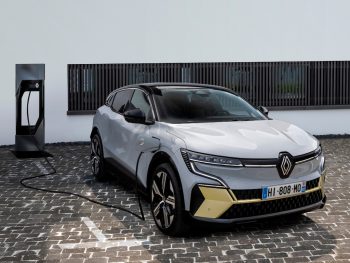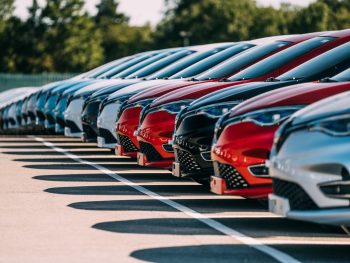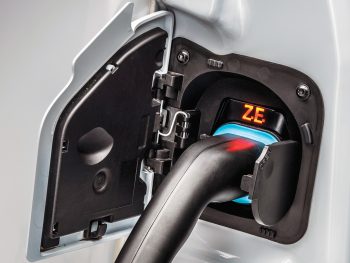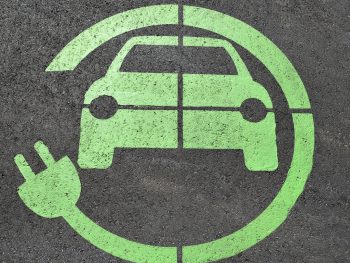An electric pace of change: How fleets are tackling the 2030 ICE ban
As the countdown to 2030 continues, Natalie Middleton asks the experts what has changed since the Government brought forward the ICE engine ban and its implications.

Fleets only have around two replacement cycles before the deadline hits
It’s only some 10 months since the Prime Minister officially announced that sales of new petrol and diesel cars and vans would be banned by 2030 but the signs are there that it’s helped significantly accelerate interest in EVs.
The 2030 target, which is a major fast-track of the previous 2040 date but with a five-year stay of execution for hybrid models, means that fleets only have around two replacement cycles before the deadline hits.
It’s fast started to spur EV take-up in a market that was already rapidly accelerating – in 2020, pure EVs had a 6.6% market share of new car registrations, rising to 10.9% in August 2021. And this is only going to go one way in the coming years.
But there are a range of other reasons for going green – not least the commitments around Benefit-in-Kind rates over the next four years, as summarised in the incentives boxout overleaf. So how much is the 2030 cut-off galvanising fleets?
Meryem Brassington, electrification propositions lead at Lex Autolease, tells us: “Since the start of this year, we’ve seen a definite acceleration in companies making decisions now to investigate putting into place the right policies, and then moving forward. So, I think the ban has had that effect. I think things like our salary sacrifice scheme as well has helped with that, because obviously we’ve got additional services that broadens the scheme to other drivers within the business.
“The only caveat to that would be for LCVs and vans, where we’re not seeing decisions being made quickly around the transition. So, for cars yes, but for vans there’s interest, although it’s much slower.”
Christopher Caddick, head of business development at JCT600 Vehicle Leasing Solutions (VLS), agrees that the 2030 ban is spurring change. : “There has been a clear and obvious increase in the uptake of EVs, both BEV and PHEV, for a number of years now. However, since the announcement of the 2030 ICE ban, it has certainly brought forward conversations with more operational fleets – for both cars and LCVs – as we continue to help our customers on their own ‘Road to Zero’.
“For perk fleets, the incentives were already great enough to outweigh some of the operational challenges of adopting EVs. These incentives made EVs make sense from a cost point of view for operational fleets, but between the ICE ban and the availability of new and larger batteries, greater vehicle range and lower purchase price, the conversations have been accelerated.”
Jason Coleman, national account manager, NHS Fleet Solutions, Home Electronic Solutions, agrees that that move to EVs had already been set in place.
“The trend among our salary sacrifice end-users – who are exclusively public/not-for-profit sector employees – shifting to ULEVs at scale began in late 2019. This was due to the impending introduction of zero BiK on ZEVs in April 2020.”
He adds: “The 2030 ICE ban, and policies aligned within specific sectors, such as NHS Road to Net Zero, have resulted in many public sector employers reviewing their CO2 emissions cap.”
And Coleman says that such CO2 caps have seen potential end-users become more focused on cars with much lower BiK liability.
Shaun Sadlier, head of consultancy, Arval UK, sums it up, saying: “It’s undeniable that the 2030 internal combustion engine production deadline has been an important aspect for fleet electric vehicle adoption.
“However, the three key factors powering the recent leap in EV adoption have been related less to this announcement in itself, but more due to other enabling factors, i.e., the very low Benefit-in-Kind taxation for drivers, a much wider selection of suitable fleet vehicles with increased EV range, and continually improving charging infrastructure – both domestic, public and in workplaces across the country.”
A hybrid approach to switching

Venson says plug-in hybrids, pure electric and range-extended electric vehicles are proving to be the optimum fuel choice, with hybrids commonly a halfway house
With the 2030 deadline fast approaching, and the low BiK rates driving EV adoption, what sort of hybrid mix are the fleet leasing and management firms seeing currently? Are fleets choosing to go electric straight away?
The answer is that it very much depends on the specific fleet and their operations and requirements – with some more suited to going electric faster than others.
According to Danielle Tilley, business development director at Venson Automotive Solutions, businesses have been embracing a ‘blended’ fleet of powertrains for quite some time – but both diesel and petrol models remain in the mix for the time being.
“Diesel has of course been the ‘go-to’ powertrain of choice for company car drivers following the introduction of CO2-based Benefit-in-Kind tax – and it remains so for high-mileage drivers. However, today, plug-in hybrids, pure electric and range-extended electric vehicles are proving to be the optimum fuel choice, with hybrids commonly a halfway house.
“This trend could be halted though in the short term, if Government doesn’t have a consistent and measured approach to BiK rates beyond 2024,” she warns.
Lex Autolease’s Meryem Brassington, electrification propositions lead at Lex Autolease, also says that things are rapidly evolving, due to the low BiK rates.
“In 2019 and 2020, it was more weighted towards hybrid,” she explains. “If you look at our fleet size, there is a greater weighting to hybrid – that has significantly changed in the last six to nine months because the savings are really on pure EV and when we’re working with clients, generally we go with an ‘EV-first’ policy.
“So, where we can help drivers and fleets into an EV policy, getting them the maximum savings, getting them the maximum impact on their carbon reduction, we tend to work with that approach and then obviously hybrid where there are drivers that maybe can’t charge at home etc. So, as a result of that we’re seeing a definite move towards pure battery, this year.”
Meanwhile, both Arval and NHS Fleet Solutions have seen rapid change over the summer.
Shaun Sadlier says: “This impetus to adopt EVs is reflected in our latest figures. At the end of June 2021, electrified vehicles – meaning both EVs and PHEVs – represented more than 40% of Arval UK’s total new vehicle orders, with EVs alone at more than 22%.”
And Jason Coleman states: “Of the first 1,000 car orders we have taken for salary sacrifice end-users in August, 61.7% are ZEVs and a further 24.7% are PHEVs. The balance is a mix of ICE/mild-hybrids.”
There is a need to take things on a case-by-case basis though – not just by fleet but also by driver. Christopher Caddick of JCT600 VLS sets out: “Not every fleet is ready today, and it is important to look at fleets within fleets, as a one-size-fits-all approach is not going to help the transition. For certain vehicles on the fleet, or employee populations, they have been able to operate EVs for a number of years; and if they pick off the low hanging fruit first, then by the time they come to tackle the trickier pockets of the fleet, the ongoing infrastructure projects, coupled with increased range of suitable vehicles, will make the transition much easier.”
Open to change

The industry says fleets are generally very open to the switch to EVs as they can see how EV prices and electric ranges are improving, along with the charging infrastructure
While the move to electric fleets seems to fit well with many companies’ sustainability policies, and drivers’ eco approach, what are the experts finding?
The switch to electric fleets will be game-changing for the sector but are clients generally happy about switching or is there some resistance?
Happily, it seems the tide is turning here – supported by greater awareness of climate change at an individual and corporate level and a far wider choice of EVs and charging options.
Lex Autolease’s Meryem Brassington explains: “For many of our customers, this meets and addresses their own corporate sustainability and net zero goals, which many of the larger businesses we deal with have.
“It absolutely aligns with their wider purpose, as well as having cost savings for the business and benefits for the drivers. So, the conversations are overwhelmingly positive, I’d say at the moment. There are some fleets which have a high proportion of drivers that can’t charge at home.
“Obviously that’s highly important, in helping the transition. So, we help clients, through those sorts of challenges. For those who’ve got a sufficient proportion of drivers who can charge at home, it’s generally positive. We use our consultants to have these conversations with clients and it’s busy, everyone seems to want to have that conversation – how do I make the switch?”
Christopher Caddick of JCT600 VLS concurs that fleets are embracing the switch.
“Overall, they are very open to the change as they see the direction of travel of the purchase price, the increasing range of electric vehicles, as well as the availability of charging infrastructure,” he outlines.
“This, combined with the Government ‘doubling down’ on its commitment to the road to zero in the latest Decarbonising Transport Report, including re-confirming the low Benefit-in-Kind for EV company cars until 2024/25, has certainly helped to accelerate decisions for some businesses. It is also worth noting that employee pressure from an environmental stance and the potential savings has contributed.”
Arval’s Shaun Sadlier also notes a sea change in approaches: “Over the past two to three years we have seen a change in attitude from curiosity to enthusiasm. Two of the main issues that fleets previously had with EVs were range and cost. Effectively, both of these objections are no longer a problem in the vast majority of cases. With a typical range of 250 miles-plus, most EVs being considered by fleets are now able to meet the daily demands of almost any business journey.
“Also, we have been able to show, when using a whole-life cost approach, how EVs can be integrated onto choice lists, alongside petrol and diesel vehicles and that their costs are comparable to, if not lower than, ICE vehicles.”
Jason Coleman of NHS Fleet Solutions says fleet support, in various different forms, has helped counter EV concerns.
“There was resistance from employers a few years ago due to concerns that employees would expect workplace charging points for their vehicles. This has been alleviated to a large extent as more than 60% of ZEV drivers on our scheme select a home-charging point, which we include as part of their salary sacrifice arrangement for an additional modest monthly cost.
“In terms of end-users, we sensed hesitancy initially with regard to mileage range anxiety and worry about access to public charging facilities. Fortunately, there are many websites which help to separate fact from myth, in addition to useful apps for understanding charging access, such as Zap Map. Also, changes to working patterns for many staff during 2020-21 may realistically have lessened concerns about charging away from home, at least in the short-term.”
There is still work to be done though. Kieran Doherty, UK head of business sales at Arnold Clarke Group, states: “Most customers are keen to start to make the move to electric vehicles but have concerns over costs and practicality. The Benefit-in-Kind advantages have also generated increased interest.”
And location and other demographics are also having a bearing on attitudes to EVs.
Duncan Chumley, CEO of flexible car subscription firm Mycardirect, rationalises it: “Our subscribers located in London are generally more enthusiastic towards electric vehicles. Their positivity may be derived from an extended transitional period due to the early introduction of low-emission zones.
“Often they are requesting fully electric cars in a bid to avoid additional charges and perhaps to appear on-trend. Subscribers from more rural areas sometimes struggle to comprehend the challenges of electric charging and feel it isn’t a viable option.
“Despite the obvious environmental benefits and exemption from certain zones, going electric can be expensive. EV drivers have to consider the reduced range, rising price of energy, and cost of a home charger if they choose to install one. Having said that, the vast majority of Mycardirect subscribers who opt for an electric car don’t swap out of it.”
The influence of charging concerns

The level of concern over charging varies depending on the client and region
While the choice of models with 250+ miles range is increasing, along with rapid improvement to the charging infrastructure, are fleets still worried about the charging structure?
For some years now, range anxiety and concerns over the charging infrastructure have held back both businesses and drivers from going electric. So is this still an issue?
Kieran Doherty at Arnold Clarke Group is unequivocal. “Very much so,” he replies. “Not only from the point of view of the number of charging points, but also whether those charging points will be available and working.”
But according to Meryem Brassington of Lex Autolease, the level of concern varies depending on the client and region – depending on their driver’s ability to charge at home, what sort of journeys they are doing typically and where they are regionally.
“I think it’s definitely a concern,” she says, “but we have been able to overcome it by helping them with surveys for depots or helping them understand what proportion of their drivers can charge at home or charge locally. The charging infrastructure has improved, but there’s lots more investment coming, I know it’s not quite there nationally – but it is moving forward so quickly. So, I think it’s an important factor in the decision-making – but it isn’t stopping fleets transitioning.”
Duncan Chumley from Mycardirect is also seeing wariness among clients.
“This is a genuine concern for our electric car subscribers and rightly so, especially as more and more stories appear in the national press/TV about the limited infrastructure or the number of charging stations which just do not work.
“The cost is also a factor, with pricing per KW being as high as 60 pence. We do, however, encounter just as many positive stories as negative ones.”
There is action being taken though.
Arval’s Shaun Sadlier says: “With most EVs being considered by fleets now capable of a 250 mile-plus range, the issue of the charging infrastructure is important but not critical. Fleets are expecting that the majority of charging will take place overnight at drivers’ homes and that public charging points will only be used when necessary.
“A challenge regarding charging is for those drivers who do not have off-street parking where home chargers can be installed. Companies are having to look for other solutions, such as parking at their office or depot, or ensuring that those drivers needing to use public charging points are not impacted financially.
“While the Government is aware of this issue, investment is underway, and a range of innovative solutions for kerbside charging is becoming available, even though it is a challenge that may take some time to solve.”
And NHS Fleet Solutions’ Jason Coleman says: “A large number of employers we speak to, among a client base of around 250, tell us they are in the process of installing charging points on their sites, either for the first time, or in the case of larger employers (below 5,000 staff) often in addition to existing infrastructure.”
Christopher Caddick of JCT600 VLS also points out that there’s many different options to consider for recharging an EV – unlike refuelling an ICE car.
“From home and workplace charging, the driver only requiring a vehicle with a battery suitable for daily mileage or charging ‘on-the-go’ at public charging points to super-fast charging hubs, which coupled with a large battery, will mean some drivers may only need to ‘fill up’ once or twice a month.
“The charging infrastructure is increasing, and drivers now have options that suit their lifestyles and requirements. As the Government continues to push its carbon zero agenda, we will see further investment in the charging infrastructure to encourage more businesses and drivers to adopt EVs in favour of ICE vehicles.”
Wide-scale industry support for fleets

The fleet industry is providing a wide range of EV consultancy and support services
So with the switch to electric still clearly posing major considerations for fleets ahead of 2030 – and many operators still having concerns – how is the fleet industry helping?
While there are many areas that fleets need to address in the transition to EVs, it’s important to note that the fleet management and leasing firms are taking action, on everything from consultancy to charging support.
This includes Arval, which according to Shaun Sadlier, has one of the fleet industry’s most well-known and respected consultancy teams, which helps hundreds of fleets with their electrification process.
“One of the main tasks is the integration of EVs into choice lists alongside petrol and diesel vehicles – an important stepping stone to complete electrification. Fleets that have traditionally constructed their choice lists based on lease rates, find that the monthly rate for EVs tends to be much higher than ICE vehicles. Our solution is to switch to a whole-life cost based approach, where the cost-competitiveness of EVs is much more apparent, as multiple factors are considered in calculations (such as reductions in business fuel and Class 1A NIC which are lower for an EV).
“It has long been our view that WLCs are a better and more complete method of deciding which models should be made available to employees. In this way, it is possible that the switch to electrification could play a part in helping the company car sector as a whole to make a shift to better methods of calculating vehicle costs.
“In the last year our consulting team have also increasingly been providing support to customers who operate LCVs and are looking into the feasibility of implementing electrified LCVs onto their fleets, in preparation for the 2030 ICE engine ban.”
Jason Coleman says NHS Fleet Solutions is providing a wide range of support.
“We help in a number of ways, including providing end-users access to large bulk-leasing volume deals we have with major leasing companies and OEMs – reducing both cost and lead-times for drivers.
“Installation of home charging points – easy process and low monthly cost. Tailored ‘green’ marketing – often advertising a range of car choices, from small city EVs to premium SUVs.
“Support to employers by sharing best practice from our own 11,000-staff hospital trust, Northumbria Healthcare. Our trust has installed 70 charging points across our 13 sites, including many 22kw as well as 50kw devices.
“Educational events for end-users – including webinars, FAQs and myth-busting information. An experienced aftercare team on-hand to mediate between end-users, employers, leasing companies, OEMs and vehicle service/repair agents.”
In fact, the general consensus is that a significant array of support options are available to clients.
Kieran Doherty at Arnold Clarke Group sets out: “We have a number of tools to assist our customers with the move, from whole-life cost calculators to charging point information. Arnold Clark has invested £5m into our Innovation Centre which aims to educate customers about the benefits of alternative fuelled vehicles. It also gives our staff the opportunity to learn about advancing technology and we believe education is key to adoption.”
Lex Autolease’s Meryem Brassington outlines: “We’ve helped clients with surveys, to understand what charging infrastructure is needed to support their fleets. We help with ensuring their drivers can install chargers at home, so those are the sort of things that we’re looking at, at the moment.”
Different funding options can also provide different routes to market, according to Duncan Chumley: “Mycardirect is able to assist our subscribers transition into electric because we offer the flexibility to try one out without the long-term commitment. Rather than blindly agreeing to an EV for 3-5 years, or indeed purchasing one, our subscribers can try cars from 1-24 months.
“We are also able to offer our subscribers one months’ free electric charging via our partner, Bonnet. Over the past few months, we have had many more companies subscribe to cars through us, on the basis that they want to trial EVs to see if they meet their business needs. That’s the beauty of Mycardirect’s flexible subscription service… if a vehicle does not suit a customer’s requirements, it’s easy to change it!”
The Fuelling Change feature is from the September issue of Fleet World. To read the full issue, click here.

















